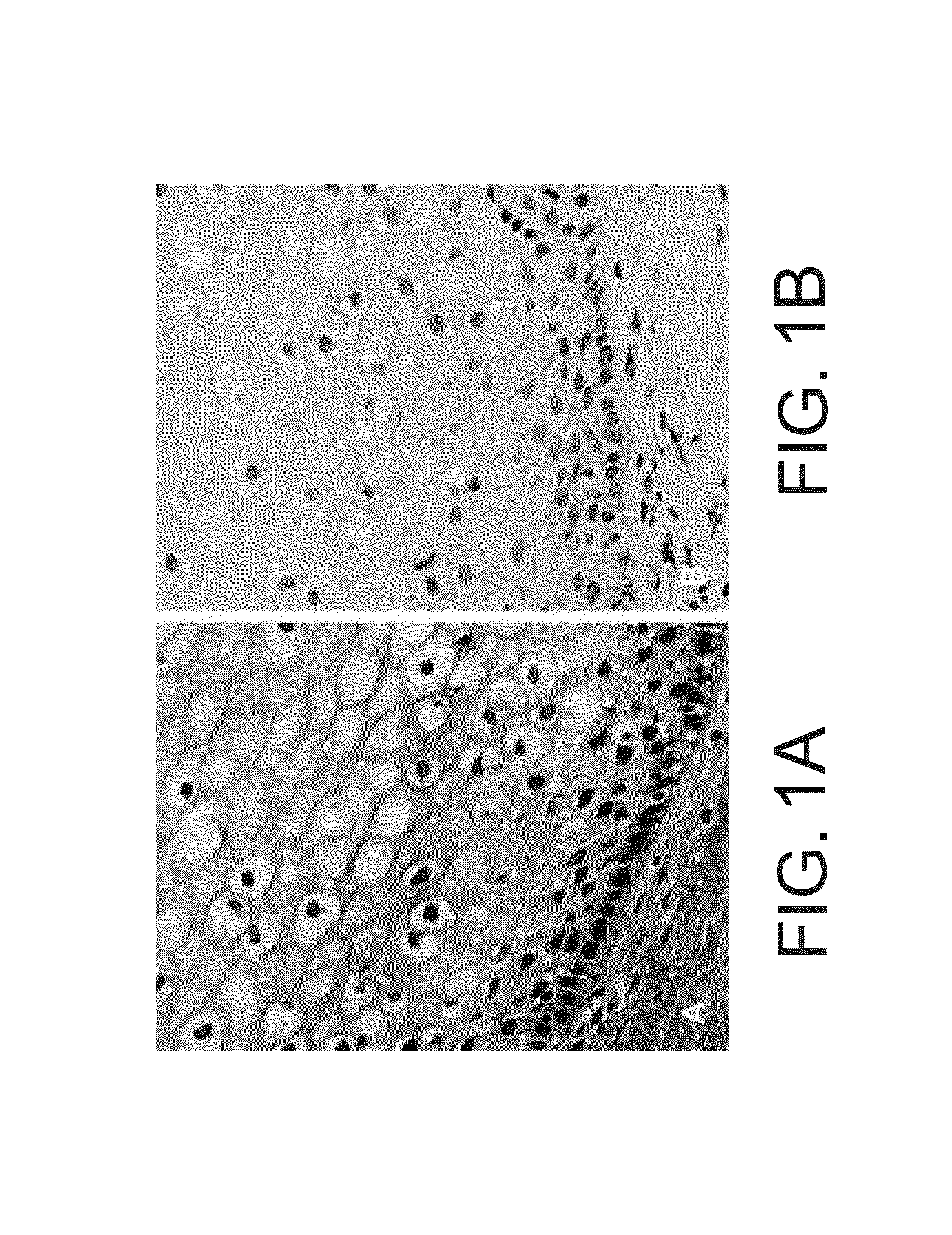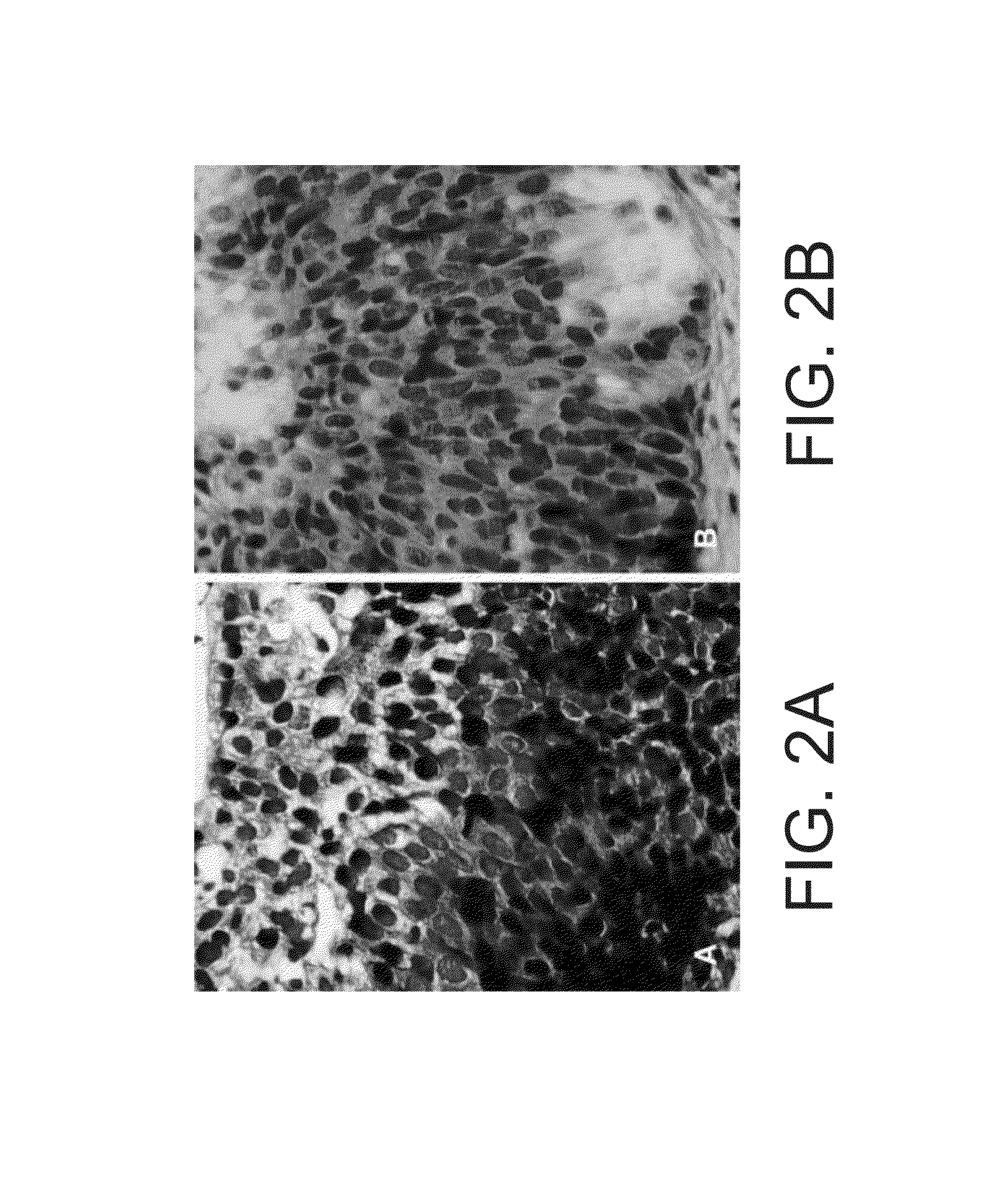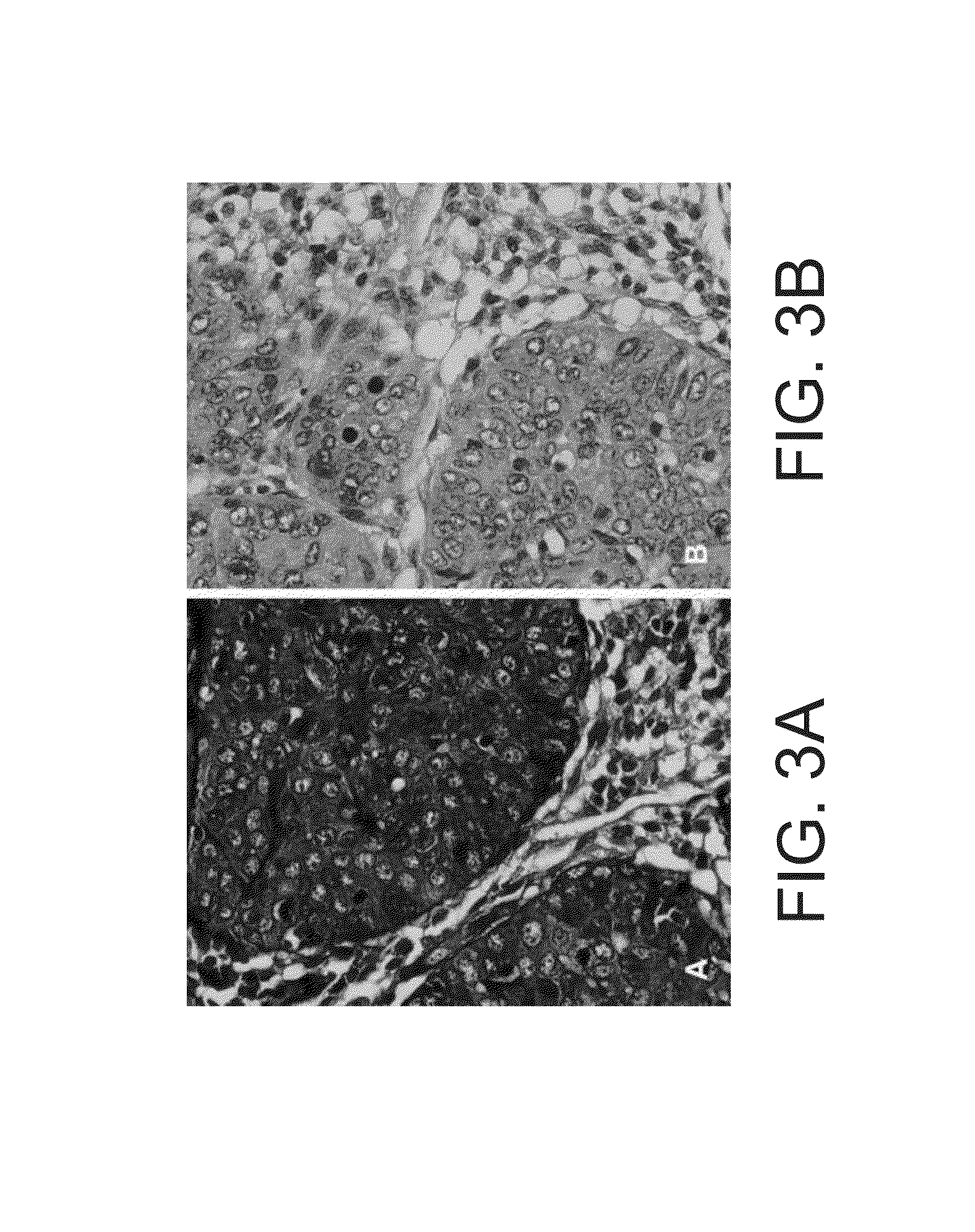Kits for and methods of differential staining of cervical cancer cells and/or tissues
a technology of cervical cancer cells and kits, applied in the field of kits and methods of differential staining of cervical cancer cells and/or tissues, can solve the problems of becoming a major health hazard for the patient with cervical cancer
- Summary
- Abstract
- Description
- Claims
- Application Information
AI Technical Summary
Benefits of technology
Problems solved by technology
Method used
Image
Examples
example 1
Diagnosing Cervical Cancer by Cervical Histology
[0384]To establish the feasibility of the staining method according to some embodiments of the invention in detecting cervical cancer in cervical biopsies, optimize staining procedure, establish a correlation of atypical cell morphology with the presence of red color in those atypical cells, optimize and validate the ability of the staining method of some embodiments of the invention to detect cervical cancer and determine the sensitivity of the staining method of some embodiments of the invention to detect cervical cancer, the present inventors have conducted a single center open labeled study. The study was conducted at the Meir Medical Center, Kfar Saba, Israel, and included up to 60 cervical biopsies.
[0385]Study Outline
[0386]Biopsy samples with known diagnosis were received from Meir medical center pathology department, and transferred to a pathology laboratory to prepare multiple slides from each biopsy. The study is an open label...
example 2
Diagnosis of Cervical Cancer by Staining Conventional Cervical Smears
[0484]The study was designed to optimize and validate the ability of staining method of the invention to detect cervical cancer using a cervical smear. The study is an open label learning and calibration study of cervical smears with known pathology, intended for the optimization of the staining procedure and testing its feasibility in detecting cervical cancer.
[0485]Materials and Experimental Methods
[0486]Cervical smears on microscopical slides.
[0487]Protocol of Staining Conventional Cervical Smears:
[0488]Slides were washed in 100% Ethanol (EtOH) for 20 minutes, followed by a wash in double distilled water (DDW). Slides were then stained with Hematoxylin (ready for use solution) for 1 minute, rinsed under running Tap water for 2 minutes and washed in DDW for 10 seconds. Slides were then incubated with the Ficus elastics plant extract for 4 minutes, washed in DDW and incubated with 0.5% NF (New Fuchsin) in 20% EtOH...
example 3
Diagnosis of Cervical Cancer by Staining Liquid Based Slides (Thin-Prep™ Slides) and Comparison to Other Diagnostic Methods
[0498]This study was designed to validate the staining method and kits of some embodiments of the invention as an adjunct to the diagnosis of cervical neoplastic processes in cervical cytology. This open labeled study was conducted on cervical samples with a known diagnosis, collected at Meir medical center or at Maccabi HMO in Israel. To obtain cervical samples with known diagnosis, subjects were recruited to the study upon visiting the medical facility (e.g., the colposcopy clinic) for follow up examinations following a suspected atypia. This protocol further served to increase the percent of subjects with dysplasia, which are of low prevalence in the general population. Accordingly, the percentage of subjects with dysplasia in this study was high.
[0499]The first part of this study entailed calibration and optimization of the staining process towards cervical ...
PUM
| Property | Measurement | Unit |
|---|---|---|
| thickness | aaaaa | aaaaa |
| thickness | aaaaa | aaaaa |
| thickness | aaaaa | aaaaa |
Abstract
Description
Claims
Application Information
 Login to View More
Login to View More - R&D
- Intellectual Property
- Life Sciences
- Materials
- Tech Scout
- Unparalleled Data Quality
- Higher Quality Content
- 60% Fewer Hallucinations
Browse by: Latest US Patents, China's latest patents, Technical Efficacy Thesaurus, Application Domain, Technology Topic, Popular Technical Reports.
© 2025 PatSnap. All rights reserved.Legal|Privacy policy|Modern Slavery Act Transparency Statement|Sitemap|About US| Contact US: help@patsnap.com



